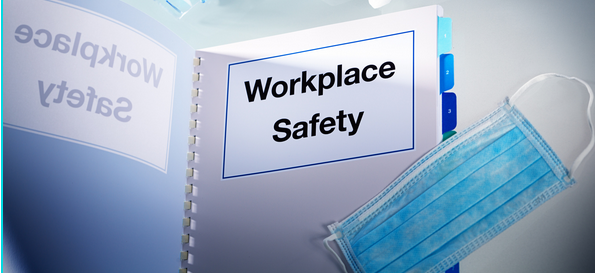Date: June 4, 2021
Standards Board Readopts Revised Cal/OSHA COVID-19 Prevention Emergency Temporary Standards
The revised Cal/OSHA standards are expected to go into effect no later than June 15
Sacramento—The Occupational Safety and Health Standards Board on June 3 readopted Cal/OSHA’s revised COVID-19 prevention emergency temporary standards.
Last year, the Board adopted health and safety standards to protect workers from COVID-19. The standards did not consider vaccinations and required testing, quarantining, masking and more to protect workers from COVID-19.
The changes adopted by the Board phase out physical distancing and make other adjustments to better align with the state’s June 15 goal to retire the Blueprint. Without these changes, the original standards, would be in place until at least October 2. These restrictions are no longer required given today’s record low case rates and the fact that California has administered 37 million vaccines. The revised emergency standards are expected to go into effect no later than June 15 if approved by the Office of Administrative Law in the next 10 calendar days. Some provisions go into effect starting on July 31, 2021.
The revised standards are the first update to Cal/OSHA’s temporary COVID-19 prevention requirements adopted in November 2020.
The Board may further refine the regulations in the coming weeks to take into account changes in circumstances, especially as related to the availability of vaccines and low case rates across the state.
The standards apply to most workers in California not covered by Cal/OSHA’s Aerosol Transmissible Diseases standard. Notable revisions include:
- Face Coverings: Fully vaccinated workers without COVID-19 symptoms do not need to wear face coverings in a room where everyone else is fully vaccinated and not showing symptoms. Fully vaccinated and unvaccinated workers without symptoms do not need to wear face coverings outdoors except when working at “outdoor mega events” with over 10,000 attendees, which may include events or theme parks. Indoors, all workers – regardless of vaccination status – will continue to be required to wear a face covering.
- Physical Distancing: When the revised standards take effect, employers can eliminate physical distancing and partitions/barriers for employees working indoors and at outdoor mega events if they provide respirators, such as N95s, to unvaccinated employees for voluntary use. After July 31, physical distancing and barriers are no longer required (except during outbreaks), but employers must provide all unvaccinated employees with N95s for voluntary use.
- Prevention Program: Employers are still required to maintain a written COVID-19 Prevention Program but there are some key changes to requirements:
- Employers must review the California Department of Public Health’s Interim guidance for Ventilation, Filtration, and Air Quality in Indoor Environments.
- COVID-19 prevention training must now include information on how the vaccine is effective at preventing COVID-19 and protecting against both transmission and serious illness or death.
- Exclusion from the Workplace: Fully vaccinated workers who do not have COVID-19 symptoms no longer need to be excluded from the workplace after a close contact.
- Special Protections for Housing and Transportation: Special COVID-19 prevention measures that apply to employer-provided housing and transportation no longer apply if all occupants are fully vaccinated.
The Standards Board will file the readoption rulemaking package with the Office of Administrative Law, which has 10 calendar days to review and approve the temporary workplace safety standards enforced by Cal/OSHA. Once approved and published, the full text of the revised emergency standards will appear in the Title 8 sections 3205 (COVID-19 Prevention), 3205.1 (Multiple COVID-19 Infections and COVID-19 Outbreaks), 3205.2 (Major COVID-19 Outbreaks) 3205.3 (COVID-19 Prevention in Employer-Provided Housing) and 3205.4 (COVID-19 Prevention in Employer-Provided Transportation) of the California Code of Regulations. Pursuant to the state’s emergency rulemaking process, this is the first of two opportunities to readopt the temporary standards after the initial effective period.
The Standards Board also convened a representative subcommittee to work with Cal/OSHA on a proposal for further updates to the standard, as part of the emergency rulemaking process. It is anticipated this newest proposal, once developed, will be heard at an upcoming Board meeting. The subcommittee will provide regular updates at the Standards Board monthly meetings.
The Occupational Safety and Health Standards Board, a seven-member body appointed by the Governor, is the standards-setting agency within the Cal/OSHA program. The Standards Board’s objective is to adopt reasonable and enforceable standards at least as effective as federal standards. The Standards Board also has the responsibility to grant or deny applications for permanent variances from adopted standards and respond to petitions for new or revised standards.
The California Division of Occupational Safety and Health, or Cal/OSHA, is the division within the Department of Industrial Relations that helps protect California’s workers from health and safety hazards on the job in almost every workplace. Cal/OSHA’s Consultation Services Branch provides free and voluntary assistance to employers to improve their health and safety programs. Employers should call (800) 963-9424 for assistance from Cal/OSHA Consultation Services.
